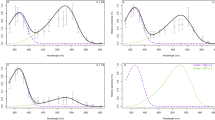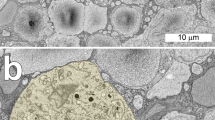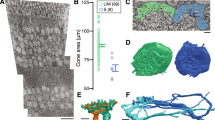Abstract
IN the course of an investigation of the photosensitive pigments of the grass snake retina, photomicrographs were taken of fresh flat retinal preparations. The retina was carefully removed from a newly killed animal and mounted in a drop of saline confined within a shallow wax ring on a coverglass with the outer retinal surface in contact with the glass. The whole was then inverted on to a slide1 and examined under the microscope. In such a preparation the light passes across the retina in the same direction as it does in the living eye, that is, from the internal to the external limiting membrane, and then along the visual cells parallel to their long axes. What one looks at down the microscope is a cross-section of the visual cells.
This is a preview of subscription content, access via your institution
Access options
Subscribe to this journal
Receive 51 print issues and online access
$199.00 per year
only $3.90 per issue
Buy this article
- Purchase on Springer Link
- Instant access to full article PDF
Prices may be subject to local taxes which are calculated during checkout
Similar content being viewed by others
References
Denton, E. J., and Pirenne, M. H., J. Physiol., 116, 33P (1952).
Wright, W. D., and Nelson, J. H., Proc. Phys. Soc., 48, 401 (1936).
O'Brien, B., J. Opt. Soc. Amer., 41, 882 (1951).
Author information
Authors and Affiliations
Rights and permissions
About this article
Cite this article
TANSLEY, K., JOHNSON, B. The Cones of the Grass Snake's Eye. Nature 178, 1285–1286 (1956). https://doi.org/10.1038/1781285a0
Issue Date:
DOI: https://doi.org/10.1038/1781285a0
Comments
By submitting a comment you agree to abide by our Terms and Community Guidelines. If you find something abusive or that does not comply with our terms or guidelines please flag it as inappropriate.



